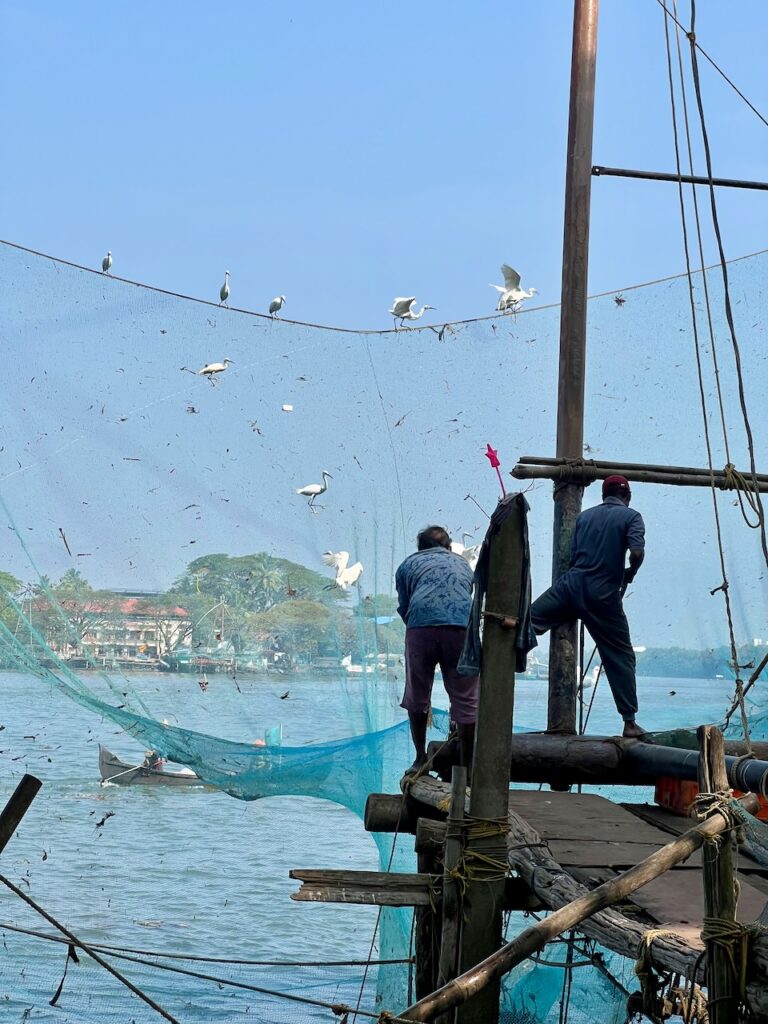After leaving Munnar one early morning, we drove down to Cochin. Took us 3 hours as there was heavy traffic on winding roads through lush tropical surroundings.
Along the way, you notice these remarkable Catholic churches. Conspicuous buildings, blaring their faith from their bizarre loonking fronts, in cleared out terrains to make them even more visible, they are something more akin to what you would expect in Las Vegas than in flourishing Kerala.
On the way, I visited a spice garden of 300 acres.
Besides the now recognisable nutmegs, black pepper, cinnamon, lemon grass, cardamom, coffee beans, coco beans etc., I also saw many plants and bushes that seem to cater to any type of medical ailment you can think of. It was like walking through a shaded pharmacy, guided by a delightful lady. First thing she asked me, after enquiring where I was from, was: “you married ?”

We also stopped to taste a glass of sugarcane juice by the roadside. They take two long poles of peeled sugarcane, pass it once or twice through a motorised wringer machine, then fold the mulch in two, put some lemon and ginger in between and then pass it again three times through the wringers and serve the filtered juice. Delicious – you can detect the two added ingredients which enhance the flavour.
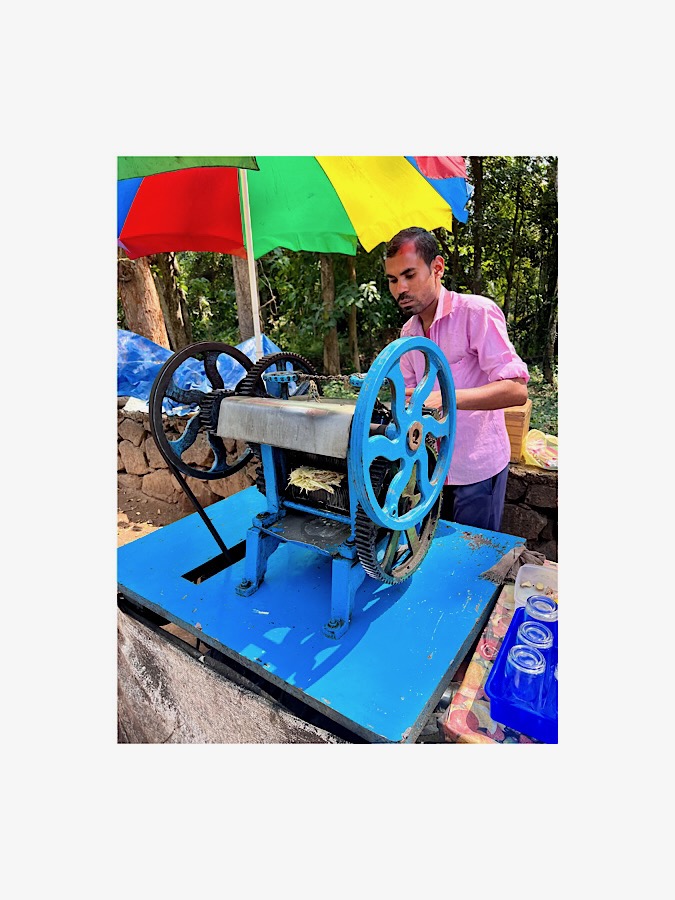
After we arrived in Kochi, where I went to my booked hostel called “Francis”. The atmosphere in the town was humid, with an overhanging white heat (33c). When I took possession of my room I found out that the AC had broken down, and I had to rely on a pathetic whirring fan. Had a terrible night as a consequence, hiding and sweating under the sheets, hoping to avoid the busing mosquitoes.
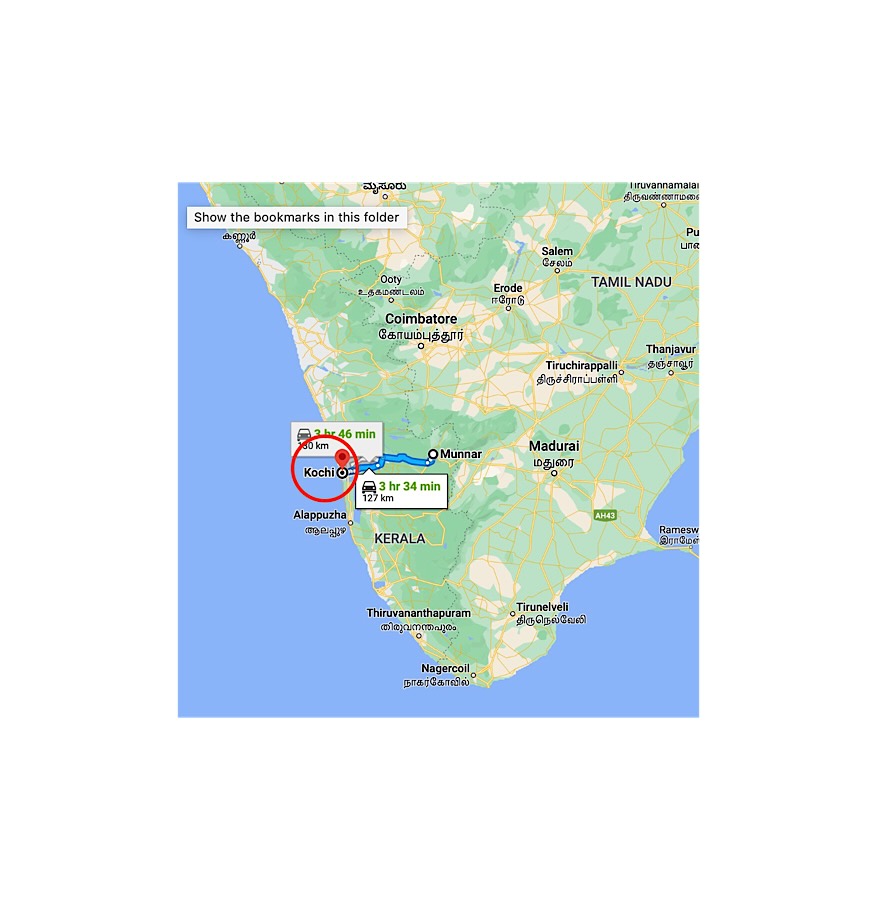
Early next morning, I was out and about with a guide who spoke comprehensible English this time. We undertook a 3 hour walk around town.
We started with St Francis Church, in Fort Kochi. This is where they had interred Vasco da Gama in December 1534, after he had died of malaria three months after arriving on his last voyage to India (his remains were returned to Portugal 15 years later). Now there’s a name that conjures up many historical memories. To think of the incredible journey this explorer undertook to discover the Spice route is awe inspiring. Just look at the map below, particularly the outbound route.
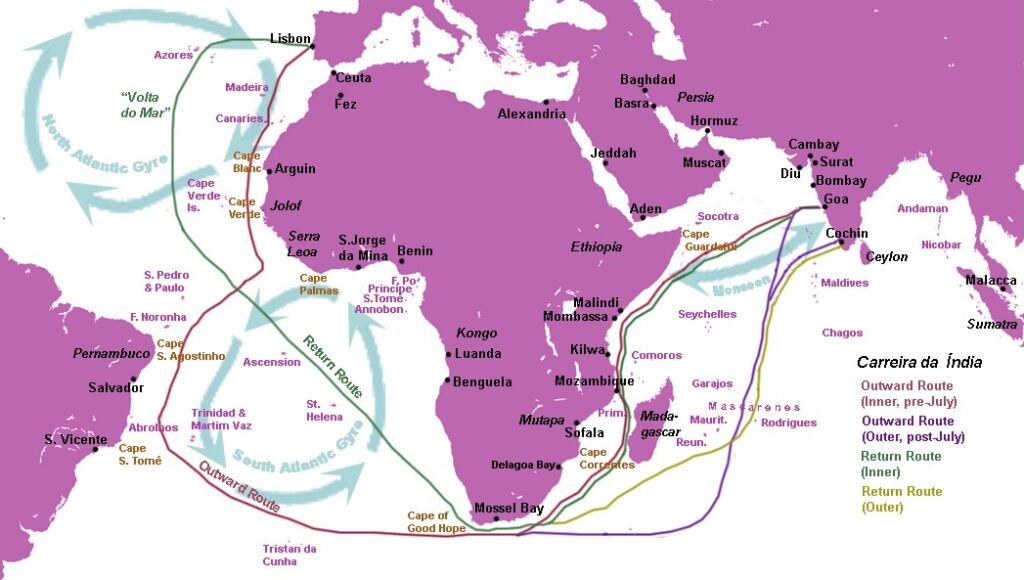
On his first voyage in 1498, he landed in Calicut, some 200 km further up the Kerala cost (called the Malabar coast in those days). If you are interested in more information, look up the excellent Wikipedia pages: https://en.wikipedia.org/wiki/Vasco_da_Gama
Close to St Francis Church was the Paradesi Synagogue (beautiful), built in 1598. And standing beside it, the palace of Mattancherry, built and offered by the Portuguese around 1545, after they had plundered a Muslim temple nearby. In effect, at the time, you had three monotheist religious edifices, standing side by side, in peaceful cohabitation, in a predominantly Hindou country. Another remarkable illustration of India’s past and still existing religious tolerance.
I also visited an ancient Dutch washing centre that served their garrison at the time (late 17th century). It is still functioning to this day, with individuals renting out space and sharing the backgrounds for their drying lines.
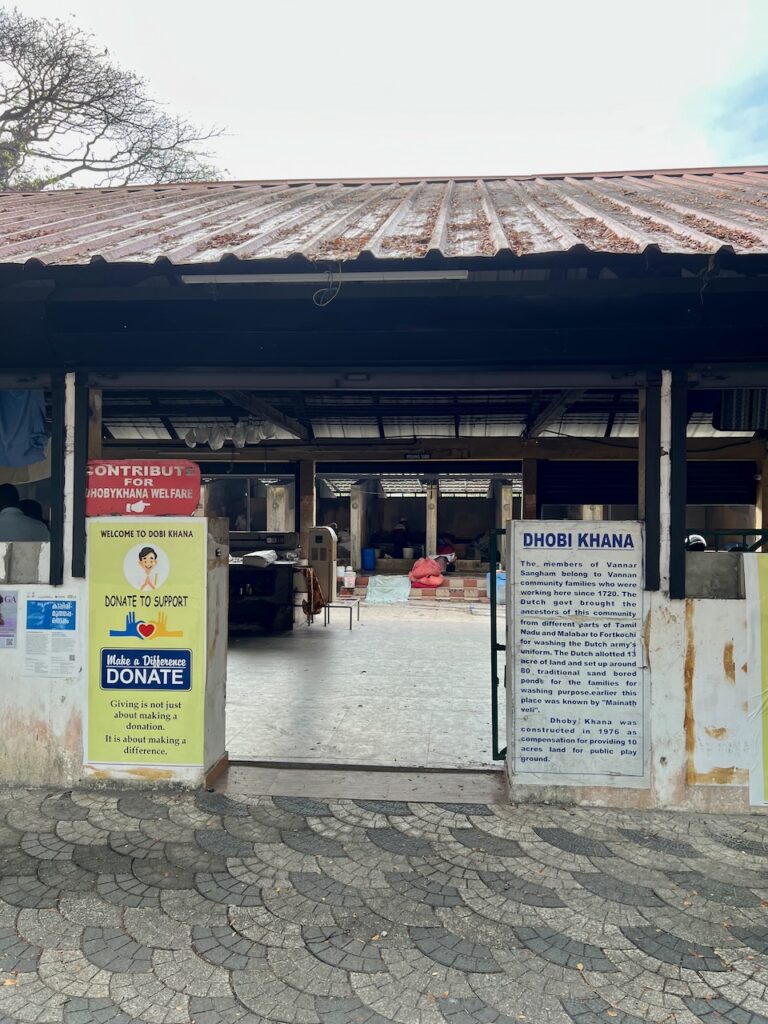
As you walk along the estuary shore, you come upon these famous stationary fishing nets. Each structure is at least 10m high and comprises a cantilever with an outstretched net suspended over the water and large stones suspended from ropes as counterweights at the other end. Takes several people to operate these things. The nets were probably introduced by the Chinese explorer Zheng He when he came by with his armada in the early 15th century. As impressive as these nets are, their yield is a far more modest affair: a few fish and crustaceans from the river bed.
Kochi is full of large furry trees, including the so called ‘canon ball’ flower tree (which grow straight from the trunk).
Walking around town, there are many curiosities, mural graffitis, Kolams etc. that catch the eye.
PS The letter box is genuine, as is the second hand kitchen utensils !
The last two pictures are of Fort Kochi, where they were holding an art Biennale.

